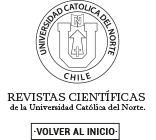Etología de camélidos y arte rupestre de la Subregión río Salado (norte de Chile, II Región)1
Abstract
RESUMEN
Este trabajo trata sobre un estilo de arte rupestre del Período Formativo Temprano registrado en la precordillera de la Subregión río Salado. El estilo, llamado Confluencia, se caracteriza principalmente por el detalle con que fueron retratados los animales, precisando actitudes y posturas que delatan determinadas actividades. A base de esto se intenta una analogía con un registro de actividades observadas en grupos familiares de vicuñas (Vicugna vicugna). El resultado muestra que hay ciertas actividades que fueron representadas, mientras otras fueron dejadas de lado sugiriendo que existe una coherencia interna dentro del estilo, que estaría necesariamente relacionada con el contexto sociocultural en el cual se desarrollaron.
Palabras claves: arte rupestre – etología de camélidos – Período Formativo Temprano.
ABSTRACT
This paper discusses the Early Formative Period rock-art style that was recorded in the mountains of the Salado river sub-region. The style, called Confluencia, is mainly characterized by the detail with which it portrays animals and the precision with which attitudes and postures reveal certain activities. On this basis, an analogy is made with a range of activities observed in vicuña family groups (Vicugna vicugna). The results show that certain activities were depicted while others were left aside, suggesting there was an internal coherence to the style, which is necessarily related to the sociocultural context in which it developed.
Key words: rock art – camelid ethology – Early FormativePeriod.
Downloads
Downloads
Published
Issue
Section
License

All works published in Revista Estudios Atacameños (ISSN on line:0718-1043) Revista Estudios Atacameños Creative Commons International 4.0 attribution (CC BY 4.0) licence.
Authors remain the owners of their work and may republish their articles elsewhere without having to request permission, as long as they indicate that the work was originally published in Revista Estudios Atacameños (ISSN on liine:0718-1043).












